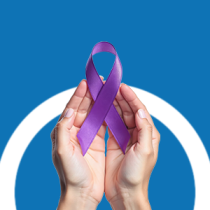Breast Cancer: How it affects everyone
Breast Cancer: How it affects everyone
Break the Silence, Breast Cancer Knows No Gender
Breast cancer awareness campaigns often revolve around the image of women adorned in pink, perpetuating the misconception that breast cancer exclusively affects females. However, the reality is quite different. Breast cancer knows no gender boundaries and can also strike men.
Dr Avron Urison - CEO: HealthCare Plan
16 October 2023 | 3 minute readLet’s shed some light on the lesser-known aspect of male breast cancer, emphasizing the need for broader awareness and early detection.
Challenging Stereotypes
While breast cancer in men is less common than in women, it is far from impossible. Although the incidence of male breast cancer in South Africa is under-documented, it was reported in the most recent South African cancer registry as comprising 1.8% of all breast cancer cases compared to worldwide male breast cancer of less than 1%. These statistics dispel the myth that breast cancer is solely a women's issue and highlight its impact on both genders, in South Africa.
The Awareness Gap
A significant challenge in addressing male breast cancer is the lack of awareness. Men often dismiss warning signs, believing that breast cancer is not a concern for them. The social stigma associated with the disease further complicates matters, preventing open discussions about symptoms and early detection. This silence puts men's lives at risk.
The Importance of Early Detection
Early detection is critical in the fight against breast cancer, irrespective of gender. Both men and women should be educated about breast cancer symptoms and risk factors. While many symptoms are similar between genders, men should be particularly vigilant about any unusual changes in their chest area, such as lumps, pain, nipple discharge, or skin dimpling. Ignoring these warning signs can result in delayed diagnosis and reduced chances of successful treatment.
Signs and Symptoms
Early detection is key to successfully treating breast cancer. In men, the warning signs may include:
- A lump or thickening in the breast or under the nipple.
- Changes in the size, shape, or appearance of the breast.
- Nipple discharge, including blood.
- Redness, scaling, or dimpling of the breast skin.
- Nipple retraction or inversion.
These symptoms should not be ignored or dismissed as they could indicate a serious health issue, potentially breast cancer. Men should promptly consult a healthcare professional for evaluation if they experience any of these signs.
Recognising Male Risk Factors
It is essential to acknowledge that men can also have risk factors for breast cancer. Family history, inherited genetic mutations, hormone imbalances, obesity, and radiation exposure are among the factors that can increase a man's risk of developing breast cancer. Understanding these risk factors is crucial for early intervention and prevention.
Breast cancer is a formidable adversary that affects individuals of all genders. It's time to break the silence and dispel the misconception that breast cancer is exclusively a women's battle. By promoting gender-neutral awareness, encouraging open dialogue, and emphasizing early detection, we can ensure that everyone, regardless of gender, has the knowledge and support needed to face this challenging disease head-on.
With Solace, you’re not alone
GET IN TOUCH
Enter your details below and we’ll call you back!
Recommended articles

Beyond the Hashtag: Your Festive-Season Guide to Supporting GBV Survivors
Learn how to safely support a GBV survivor this festive season with emotional first aid, safety planning, key resources, and Solace Trauma Assist to protect your own well-being.
15 December 2025 |
4
minute readArticle

When the Festive Season Feels Overwhelming: How to Manage Anxiety in December
The festive season can trigger intense stress and anxiety. Learn practical coping tools, boundary-setting tips, and discover how Solace's Mental Wellness Helpline supports you through December’s emotional pressures.
15 December 2025 |
4
minute readArticle

Heatwave Survival Guide: Stay Healthy This Festive Season
Beat the heat this festive season with practical health tips and the full power of your Solace HealthCare Cover and its benefits.
15 December 2025 |
5
minute readArticle




